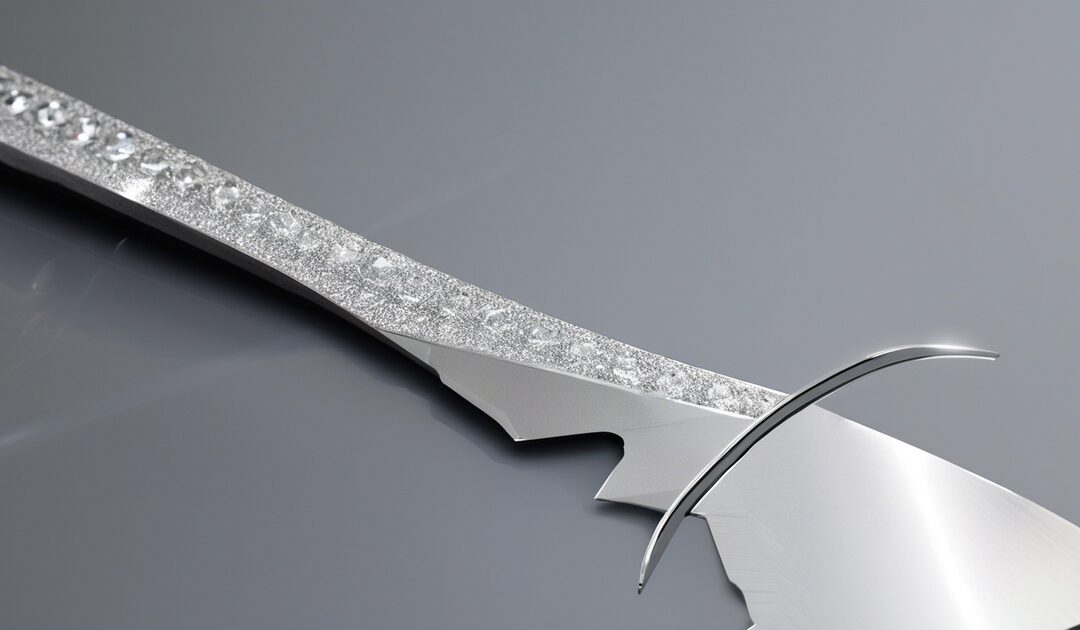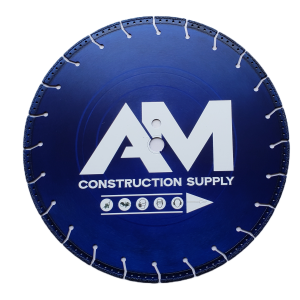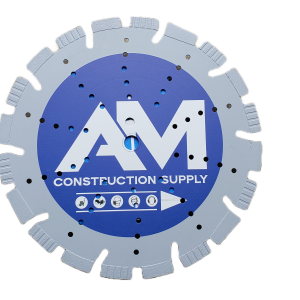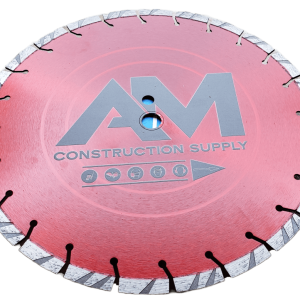Did you know that despite their name, diamond tip blades do not always contain real diamonds? The term “diamond tip” can be misleading, as these blades often feature industrial-grade diamonds or synthetic materials instead. While genuine diamond-tipped blades exist, they are typically reserved for specialized applications due to their high cost. Understanding the composition of these tools is crucial for selecting the right blade for your cutting needs. In this post, we delve into the world of diamond tip blades, exploring what materials they are made of and how to differentiate between various types in the market for construction jobs.
Key Takeaways
- Diamond tip blades do not contain real diamonds; they are made with synthetic diamonds or diamond-like materials for cutting purposes.
- To maximize the performance of diamond blades, ensure proper safety measures are in place during use to prevent accidents and injuries.
- Regular maintenance of diamond blades is crucial for longevity; cleaning and proper storage can extend their lifespan.
- When selecting a diamond blade, consider the material you will be cutting, the blade’s size and type, and match it to the specific job requirements.
- Quality diamond blades offer superior cutting capabilities, durability, and efficiency, making them a reliable choice for various cutting applications.
- Understanding the advantages, cutting capabilities, safety precautions, and maintenance needs of diamond blades is essential for achieving optimal results.
Understanding Diamond Blades
Real Diamonds?
Diamond tip blades are not made of real diamonds. They utilize synthetic diamonds, not natural ones. Synthetic diamonds offer cost-effectiveness and availability.
Synthetic diamonds in blades differ from natural diamonds. The former is manufactured, ensuring consistency and quality.
How They Cut
Diamond blades operate by grinding materials via friction. The blade’s bond determines the exposure of synthetic diamonds for cutting.
Unlike traditional blades that cut materials, diamond blades grind through them with efficiency.
Blade Lifespan
The lifespan of diamond blades surpasses that of other blade types due to their durability. A blade’s quality directly impacts its longevity.
High-quality diamond blades can withstand significantly more cutting hours compared to low-quality ones.
Choosing Size
Selecting the right blade size is crucial for project success and saw compatibility. The blade size directly influences cutting efficiency.
Choosing the appropriate size ensures optimal performance during various cutting tasks.
Advantages of Diamond Blades
Why Use Them
Diamond blades offer superior advantages over traditional metal and abrasive blades. Their safety features reduce the risk of accidents during cutting tasks. The durability of diamond blades ensures long-lasting performance, making them a cost-effective choice.
Specialized diamond blades cater to various cutting needs, providing versatility for different materials. These blades enhance cutting precision and speed, boosting efficiency in various applications. Users benefit from reduced material wastage due to precise cuts.
Cutting Efficiency
Diamond blades excel in the job of cutting hard materials like concrete, stone, and ceramics. The unique designs and shapes of diamond blades optimize cutting abilities for specific materials. The sharpness of diamond edges ensures swift and clean cuts, enhancing overall productivity.
The cutting speed of diamond blades surpasses that of traditional blades, saving time on projects. The precision offered by diamond blades minimizes errors, leading to smoother finishes on surfaces. Users experience improved efficiency and accuracy with diamond blade usage.
Durability
Diamond blades exhibit exceptional durability compared to other blade types like metal or abrasive ones. Factors such as high-quality diamond grit and bond strength contribute to the longevity of these blades. With proper maintenance practices like regular cleaning and storage, the lifespan of diamond blades can be extended significantly.
Users appreciate the consistent performance and longevity provided by diamond blades, reducing replacement costs over time. Proper handling and storage ensure that the diamond edges remain sharp for extended periods, maintaining cutting efficiency. By investing in durable diamond blades and following maintenance guidelines, users can maximize their blade’s lifespan.
Cutting Capabilities
Cutting Metal
Diamond blades are highly effective in cutting through metal due to their exceptional hardness and durability. The industrial-grade diamonds embedded in the blade’s edge enable precise and efficient metal cutting. When using diamond blades for cutting metal, it is crucial to wear appropriate safety gear such as gloves, goggles, and a face shield to prevent injuries from metal shards. The superior performance of diamond blades in metal cutting applications ensures clean cuts without causing excessive heat buildup.
Cutting Steel
Diamond blades are particularly suitable for cutting steel because of their ability to withstand the hardness of steel without losing sharpness. While cutting steel poses challenges due to its toughness, diamond blades excel in this task by maintaining their sharpness throughout the cutting process. It is essential to use the correct blade designed specifically for cutting steel efficiently and safely. Diamond blades offer precision and durability when cutting through various types of steel, making them a preferred choice for professionals.
Material Compatibility
Diamond blades can be specialized to cater to specific materials, allowing for optimized cutting performance based on material properties. These blades exhibit compatibility with a wide range of materials including concrete, asphalt, ceramic tiles, and more. Their versatility lies in handling different material hardness levels effectively, ensuring clean cuts regardless of the material being worked on. By selecting the appropriate diamond blade for each material type, users can achieve precise cuts with minimal effort.
Safety First with Diamond Blades
Proper Gear
When using diamond tip blades, ensure you have the right safety gear. This includes protective goggles, gloves, and ear protection.
Make sure your clothing is not loose to avoid any accidents. Wearing a dust mask can also protect you from inhaling harmful particles.
Manufacturer Directions
Always follow the manufacturer’s instructions for proper blade installation and usage. Failure to do so can lead to accidents or damage.
Check the maximum RPM (revolutions per minute) rating of your blade and ensure it matches your equipment. Using a blade with a higher RPM rating can be dangerous.
Safe Cutting Practices
Before starting any cutting job, inspect the blade for any damage or wear. A damaged blade can shatter during use, causing serious injuries.
Secure your workpiece properly before cutting to prevent any movement that could lead to kickbacks. Ensure proper alignment and support during cutting.
Remember to let the blade do the work; don’t force it through the material. Applying too much pressure can cause the blade to bind or kick back.
Inspect the cutting area for any obstacles or potential hazards before starting. Clear away debris and ensure there are no bystanders in the vicinity.
Always cut at a steady pace without rushing the process. Rushing can lead to mistakes and increase the risk of accidents.
Maintain a firm grip on the tool and stay focused on the task at hand. Distractions can lead to errors that compromise safety.
Maximizing Blade Performance
Don’t Force It
When using diamond tip blades, remember not to force the blade through the material; let the blade do the work. Applying excessive pressure can damage both the material being cut and the blade itself.
To ensure optimal performance, choose the right blade for the specific material you are cutting. Using the wrong blade can result in inefficiency and poor cutting quality.
Cut Straight Lines
For precise cuts, always guide the blade along straight lines. This technique not only enhances accuracy but also prolongs the lifespan of your blades by reducing unnecessary wear and tear.
Remember to maintain a steady hand and avoid sudden movements that can cause the blade to veer off course. Consistent and controlled movements yield cleaner cuts.
Cooling Techniques
Implementing cooling techniques is crucial to prevent overheating of diamond tip blades during operation. Water cooling systems or intermittent breaks allow the blade to cool down, preserving its sharpness and durability.
Regularly check for signs of overheating such as discoloration or a burning smell emanating from the blade. Promptly addressing overheating issues can extend the lifespan of your blades significantly.
Maintenance for Longevity
Routine Checks
Regularly inspect the diamond tip blade for any signs of wear and tear to ensure optimal performance. Check for cracks, missing diamonds, or uneven wearing that can affect cutting precision. Replace the blade if any damage is detected to prevent accidents and maintain efficiency.
Keep an eye on the blade’s cutting speed and efficiency during use. Any abnormalities in cutting performance could indicate a dull or damaged blade. Monitor the blade’s condition closely to avoid compromising the quality of your work and risking safety hazards.
Cleaning Tips
After each use, clean the diamond tip blade thoroughly to remove debris, resin buildup, and other particles that can hinder its cutting ability. Use a soft brush or compressed air to clear out any materials stuck between the diamonds. Proper cleaning enhances the blade’s lifespan and ensures consistent performance.
Avoid using harsh chemicals or abrasive cleaners when cleaning the blade as they can damage the diamond tips and affect cutting quality. Opt for mild soapy water and gentle scrubbing to maintain the sharpness and effectiveness of the blade over time.
Storage Solutions
Store diamond tip blades in a dry environment away from moisture to prevent rusting and corrosion. Consider using protective cases or covers to shield the blades from dust, dirt, and other contaminants that can degrade their quality. Proper storage conditions prolong the lifespan of the blades and maintain their sharpness for longer periods.
When storing multiple blades, ensure they are kept separate from each other to prevent friction and potential damage. Use designated compartments or holders to organize the blades systematically and minimize contact between them. Organized storage not only safeguards the blades but also facilitates easy access when needed.
Selecting the Right Diamond Blade
Size Matters
When choosing a saw blade, consider the size that best suits your cutting needs. Larger blades are ideal for heavy-duty projects, while smaller ones are more suitable for intricate cuts or DIY tasks. The diameter of the blade directly impacts its cutting depth and efficiency.
It’s crucial to match the saw blade size with the sawing equipment you intend to use. Using an incompatible size can lead to inefficiency, poor cutting performance, and even safety hazards. Always refer to the manufacturer’s guidelines for the recommended blade size for your specific saw.
Material Specifics
Different materials require specialized diamond blades for optimal cutting results. For example, segmented rim blades are excellent for concrete, brick, and other hard materials, while continuous rim blades provide smoother cuts on tiles and ceramics. Understanding the material you will be working with is essential in selecting the right blade type.
Consider the hardness and abrasiveness of the material you plan to cut when choosing a diamond blade. Softer materials like asphalt require a different blade than harder materials like granite or marble. Using the correct blade ensures precision cuts and prolongs the lifespan of both the blade and your equipment.
Quality Indicators
When investing in a diamond tip blade, quality is paramount for performance and durability. Look for indicators such as diamond concentration, bond type, and segment design. Higher diamond concentration means better cutting speed and longevity, while a quality bond ensures stability during operation.
Inspect the welds on the diamond blade carefully as they hold the segments together. A poorly welded blade can result in segments detaching during use, posing safety risks and affecting cutting precision. Opt for blades with laser-cut expansion slots that reduce heat buildup, preventing warping and extending blade life.
Common Questions Addressed
Lifespan Queries
Diamond tip blades are not made of real diamonds; instead, they have synthetic diamond crystals attached to the blade’s edge. These synthetic diamonds are incredibly hard and durable, making them ideal for cutting through tough materials like concrete and stone. The lifespan of a diamond tip blade varies depending on usage frequency and the type of material being cut. Regular maintenance can help prolong its lifespan.
-
Pros:
- Exceptional durability
- Suitable for cutting hard materials
-
Cons:
- Higher cost compared to other types of blades
- Requires careful handling to prevent damage
When used correctly, a diamond tip blade can last for a long time, providing precise cuts consistently. It is essential to follow the manufacturer’s guidelines for optimal performance and longevity.
Cutting Specifics
Diamond tip blades are designed for specific purposes, such as cutting concrete, asphalt, ceramic tiles, or natural stone. The size and quality of the synthetic diamonds on the blade determine its cutting efficiency and precision. Different segments on the blade cater to various cutting requirements, ensuring smooth and clean cuts in different materials.
- Diamond concentration: Determines the blade’s cutting speed and longevity.
- Blade diameter: Influences the depth of cut and overall performance.
- Segment height: Affects debris removal and cooling during cutting operations.
Using a diamond tip blade with the right specifications for the intended application ensures optimal performance and prolongs the blade’s lifespan.
Safety Concerns
While diamond tip blades are efficient tools for cutting hard materials, they also pose safety risks if not handled properly. Always wear appropriate personal protective equipment (PPE), including safety goggles, gloves, and ear protection when operating power tools with diamond blades. Inspect the blade before each use for any signs of damage or wear to prevent accidents during operation.
- Safety measures:
- Avoid using damaged blades
- Ensure proper installation on the tool
- Follow recommended operating speeds
Prioritizing safety precautions when using diamond tip blades minimizes the risk of accidents and ensures smooth cutting operations.
Why Choose Quality Diamond Blades?
Unmatched Quality
Quality diamond blades are known for their exceptional durability and cutting performance. They are designed to withstand the toughest materials, providing precise and clean cuts every time. The diamond-tipped blades ensure a longer lifespan compared to traditional blades, making them a cost-effective choice in the long run. With superior quality control measures in place, these blades guarantee consistency and reliability in every cut.
- Exceptional durability
- Precise and clean cuts
- Cost-effective choice
When it comes to challenging materials like concrete, granite, or asphalt, diamond tip blades excel in delivering smooth and efficient cutting results. Their ability to maintain sharpness over extended periods minimizes downtime for blade changes, increasing productivity on the job site. Contractors and professionals rely on these high-quality blades for their unmatched performance and longevity.
Comprehensive Range
A key advantage of opting for quality diamond blades is the extensive range of options available to suit various cutting needs. From general-purpose blades for everyday use to specialized blades for specific applications such as masonry or tile cutting, there is a diamond blade tailored for every task. Different sizes and configurations cater to different tools and equipment, ensuring compatibility across a wide range of power tools.
- Extensive range of options
- Specialized blades for specific applications
- Compatibility with various power tools
Whether you are a DIY enthusiast or a seasoned professional, having access to a comprehensive range of diamond blades allows you to tackle diverse projects with precision and efficiency. The versatility offered by these blades empowers users to achieve professional results without compromising on quality or performance.
Customer Satisfaction
One of the primary reasons why customers choose quality diamond blades is the unparalleled level of satisfaction they provide. Users appreciate the smooth cutting experience and consistent results achieved with these high-performance blades. The durability and longevity of diamond-tipped blades translate into cost savings over time, making them a popular choice among contractors and craftsmen alike.
- Unparalleled level of satisfaction
- Smooth cutting experience
- Cost savings over time
Summary
You’ve now grasped the essence of diamond blades, their benefits, cutting prowess, safety measures, performance optimization, maintenance tips, selection criteria, and common queries addressed. Choosing quality diamond blades ensures durability and efficiency in your cutting tasks. Now, armed with this knowledge, you can confidently select the right blade for your specific needs and handle them safely to maximize their lifespan. Remember to prioritize safety and maintenance for long-lasting performance. Keep exploring the world of diamond blades to enhance your cutting projects further.
Frequently Asked Questions
### Are diamond tip blades made of real diamonds?
Diamond tip blades do not contain entire diamonds; instead, they have synthetic diamonds or diamond-coated edges. The synthetic diamonds are bonded to the blade’s metal core through a high-temperature, high-pressure process.
### How long do diamond tip blades last?
The lifespan of diamond tip blades varies based on usage frequency and material being cut. On average, quality diamond blades can last between 100 to 150 cuts in hard materials like concrete or stone before needing replacement.
### Can diamond tip blades be used on any material?
Diamond tip blades are versatile and can cut through various materials like concrete, asphalt, ceramic, porcelain, brick, and natural stone. However, it is essential to select the right blade specifically designed for the material you intend to cut for optimal performance.
### Do I need water when using a diamond tip blade?
For wet cutting applications like cutting concrete or masonry materials, using water with a diamond blade helps control dust and keeps the blade cool during operation. Dry cutting without water is suitable for softer materials like wood or plastic.
### How should I store diamond tip blades?
To maintain the quality and longevity of your diamond tip blades, store them in a dry place away from moisture and humidity. Ensure they are kept in their original packaging or protective cases to prevent damage to the blade’s cutting edge.





